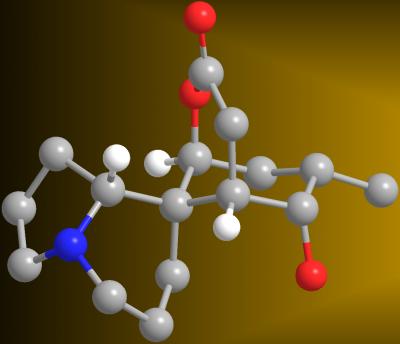Genetic differences can influence one's risk of developing proteinuria, a condition that increases the risk of cardiovascular disease and chronic kidney disease (CKD), according to a study appearing in an upcoming issue of the Journal of the American Society of Nephrology (JASN). The results may be important for determining patients' health risks and for devising new medical treatments.
Approximately 12% of people in the United States have proteinuria (abnormal levels of protein lost in the urine), and African Americans and American Indians have higher risks of developing the condition than other groups. Researchers suspect that genetic variation likely accounts for part of their increased risks.
The club moss Lycopodium serratum is a creeping, flowerless plant purportedly used to treat a wide variety of ailments. It contains a brew of alkaloids that have attracted scientific and medical interest because of the use of the moss in homeopathy. However, the plant makes many of these compounds in extremely low amounts, hindering efforts to test their therapeutic value.
That is no longer a problem for what is arguably the most complex of these alkaloids, a compound called Serratezomine A: an alkaloid that could have anti-cancer properties and may combat memory loss. A team of synthetic chemists at Vanderbilt University reported in the Journal of the American Chemical Society that they have created an efficient way to make this molecule from scratch.
Today, five years after the inception of the DECIPHER database, researchers have published a report that reveals the developing role of the database in revolutionizing both clinical practice and genetic research.
The report explores the growing benefits of DECIPHER for researchers, clinicians and patients - highlighting how the data, provided by around 100 centres and shared openly worldwide, can benefit all three groups.
A study of gene expression in chickens, frogs, pufferfish, mice and people has revealed surprising similarities in several key tissues. Researchers writing in BioMed Central's open access Journal of Biology have shown that expression in tissues with a limited number of specialized cell types is strongly conserved, even between the mammalian and non-mammalian vertebrates.
Once thought to be only the realm of the blue-ringed octopus, researchers have now shown that all octopuses and cuttlefish, and some squid are venomous. The work indicates that they all share a common, ancient venomous ancestor and highlights new avenues for drug discovery.
Conducted by scientists from the University of Melbourne, University of Brussels and Museum Victoria, the study was published in the Journal of Molecular Evolution.
Dr Bryan Fry from the Department of Biochemistry at the Bio21 Institute, University of Melbourne said that while the blue-ringed octopus species remain the only group that aredangerous to humans, the other species have been quietly using their venom for predation, such as paralysing a clam into opening its shell.
Sleep is such an essential part of human existence that we spend about a third of our lives doing it -- some more successfully than others. Sleep disorders afflict some 50-70 million people in the United States and are a major cause of disease and injury. People who suffer from disturbed sleep have an increased risk of heart attack, stroke, hypertension, obesity, depression, and accidents. Nearly a fifth of all serious car crashes, in fact, are linked to sleeplessness.
Diagnosing sleep disorders is not necessarily easy. In standard "sleep studies," people spend one or more nights at hospitals or other inpatient centers, sleeping while sensors and electrodes attached to the head and torso record breathing, brain waves, heart rate, and other vital signs.
 Opioid Addicts Are Less Likely To Use Legal Opioids At The End Of Their Lives
Opioid Addicts Are Less Likely To Use Legal Opioids At The End Of Their Lives More Like Lizards: Claim That T. Rex Was As Smart As Monkeys Refuted
More Like Lizards: Claim That T. Rex Was As Smart As Monkeys Refuted Study: Caloric Restriction In Humans And Aging
Study: Caloric Restriction In Humans And Aging Science Podcast Or Perish?
Science Podcast Or Perish?








